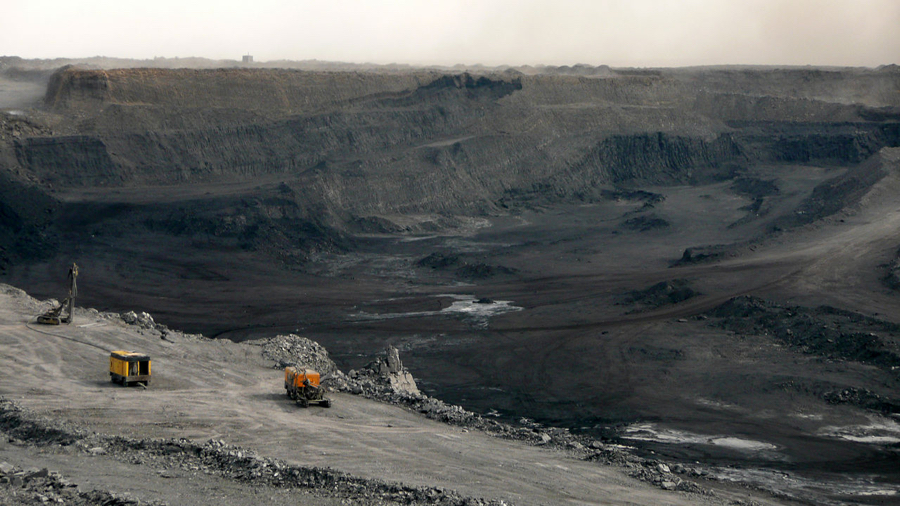
Thermal coal in China has climbed above the government’s price caps imposed last month, prompting regulators to dispatch squads to major mining regions to ensure compliance.
Cargoes for spot delivery have traded above 1,300 yuan ($195) a ton this week in the northern hub of Qinhuangdao, higher than the 1,155 yuan ceiling set by Beijing, according to people familiar with the transactions.
The market typically strengthens in the summer as air-conditioners are switched on. But prices are also rising in anticipation of a rebound in the economy after China relaxed virus curbs in its biggest cities, and as flooding and safety checks disrupted output, the people said, declining to be named as they aren’t authorized to speak publicly.
China’s efforts to subdue the price of its mainstay fuel are just one facet of a wider struggle across the world to contain energy inflation, particularly after the Russian invasion of Ukraine. By opting for price controls, Beijing is expecting its largely state-owned mining industry to put aside the dynamics of supply and demand — and the pursuit of profit — in order to serve the national interest. Although it’s still early days, the order has met some resistance.
“The strong expectation that demand is bottoming out has given coal prices a tailwind,” Xu Dongkun, a senior analyst at the China Coal Transportation and Distribution Association, said at a briefing on Wednesday. “But prices are unlikely to spike to the same level as last year for fear of harsher policy interference.”
The price controls came into effect on May 1, after Beijing pledged to prevent a repeat of the surge in prices that crippled industry last year and demanded that miners raise production to record levels. But a shortage of higher grade coal has persisted as imports have shrunk, allowing some traders to charge more in contravention of the price caps.
Thermal coal hit a record of 2,200 yuan a ton at the height of the power crunch in October. Prior to the crisis, the market typically held in a so-called green zone that had 570 yuan a ton as its upper limit, with breaches of 600 yuan expected to prompt intervention by the authorities.
Government leaders are adamant that they won’t allow provinces to cut power supplies to industry and hamper the recovery. At the same time, planners at the National Development and Reform Commission have warned of hefty fines and the cancellation of business licenses if its price caps are breached.
The NDRC plans to send officials to mining regions in the interior to help move along negotiations that have stalled between producers and buyers in industrial hubs nearer the coast, according to the people. The move comes after the province of Zhejiang that borders Shanghai warned last week of a possible power shortage in the summer. Other key economic centers, including Guangdong in the south, have been warning for weeks of similar shortfalls.
The NDRC didn’t respond to calls seeking comment.
It leaves China’s power situation precariously balanced. A recovery in industrial activity along with the easing of virus restrictions could trigger a renewed rally in prices in coming months, particularly for coal with high calorific value, Bloomberg Intelligence analyst Michelle Leung said in a research note.
“China’s recent coal-price guidance looks unlikely to stop coal spot prices from surging this summer due to hotter-than-usual weather,” she said.
| Calorific Value | Mid and Long-Term Contract Prices (yuan/ton) | Spot Price Ceiling | |
|---|---|---|---|
| Qinhuangdao | 5,500 Kcal | 570-770 | 1,155 |
| Shanxi | 5,500 Kcal | 370-570 | 855 |
| Shaanxi | 5,500 Kcal | 320-520 | 780 |
| West Inner Mongolia | 5,500 Kcal | 260-460 | 690 |
| East Inner Mongolia | 3,500 Kcal | 200-300 | 450 |
| Hebei | 5,500 Kcal | 480-680 | 1,020 |
| Heilongjiang | 5,500 Kcal | 545-745 | 1,118 |
| Shandong | 5,500 Kcal | 555-755 | 1,133 |
| Anhui | 5,000 Kcal | 545-745 | 1,118 |
| Guizhou | 5,000 Kcal | 350-500 | 750 |
Comments